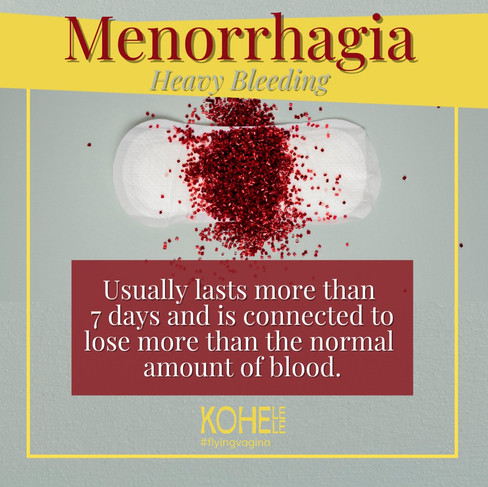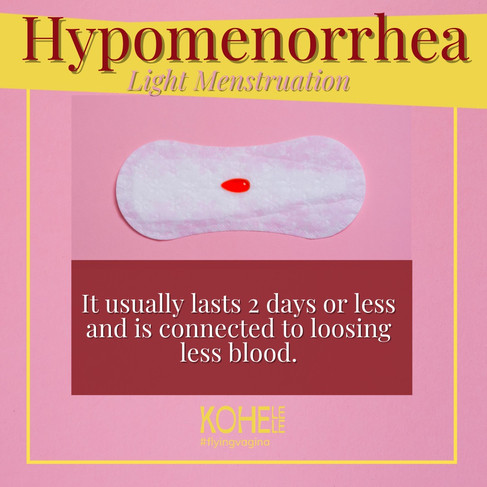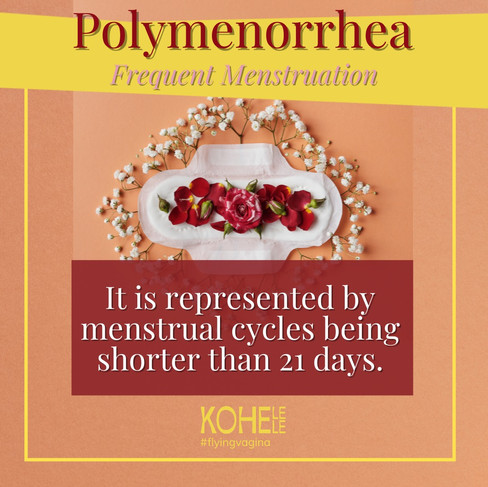Menstrual disorders
- Camelia Brande

- May 19, 2021
- 4 min read
Updated: Feb 6, 2022
On May 28th, we celebrate Menstrual Hygiene Day to raise awareness about menstruation and the importance of good menstrual hygiene management.
In honor of this special day, we dedicate the whole month of May to this important topic, one that occurs naturally in half of the global population.
This week, we will be talking about menstrual disorders, such as dysmenorrhea, amenorrhea, and many more. Don’t know what these refer to? Find out now!
The menstrual cycle represents a series of natural changes in female hormone production that make ovulation (when an egg is released from the ovary) and menstruation (monthly vaginal bleeding due to the uterus shedding part of its inner lining when the egg is not fertilized with sperm) possible.
Sometimes, the menstrual cycle does not occur as it should and women can face menstrual disorders.
A menstrual disorder is characterized as any abnormal condition in regards to a person’s menstrual cycle. The menstrual cycle can be affected by the length and flow of menstruation or the severity of symptoms. Menstrual disorders are common during puberty as in that period girls go through hormonal changes that prepare them for womanhood.
PMS is a recurrent affective, physical, and behavioral group of symptoms that develop during the luteal phase of the menstrual cycle and disappear within the first days of menstruation. PMS is a common health problem in women of reproductive age that affects quality of life, economic and social performance.
PMDD represents a severe form of premenstrual syndrome that, categorized as a disabling condition, affects personal relationships and occupational activities
The symptoms are similar to the ones of PMS, but the severity of these symptoms greatly affect the quality of life and last for a longer period of time (even two weeks); because of its severity, it can be misdiagnosed as depression or other chronic conditions.
Dysmenorrhea (painful cramps)
Represents severe and frequent pain during menstruation
The pain is usually felt in the lower abdomen but can spread to the lower back and thighs as well
It can be classified into primary and secondary dysmenorrhea
Primary dysmenorrhea represents pain caused by cramps during menstruation; the cramps happen due to the uterus contracting and shedding its excess uterine lining and can worsen during heavy bleeding
Secondary dysmenorrhea is menstrual-related pain that is worsened by the presence of other conditions such as endometriosis or uterine fibroids (non-cancerous tumors that grow inside the uterine wall)

Menorrhagia (heavy bleeding)
Happens when the menstrual flow is heavier than normal, that still occurs only during periods
It usually lasts more than 7 days and women lose more than the normal amount of blood (normal amount: 80 ml)
It is usually accompanied by dysmenorrhea (painful cramps) due to the heavier menstrual flow and discarded large clots of blood
Hypomenorrhea (light menstruation)
It is represented by a menstrual flow lighter than normal, that still occurs during menstruation
It usually lasts 2 days or less and women lose less blood (< 30 ml)
Amenorrhea (absence of menstruation)
It is represented by the lack of menstruation and can be classified into primary and secondary amenorrhea
Primary amenorrhea happens when a girl does not have her menstruation by the age of 16
Secondary amenorrhea happens when periods that were regular stop for at least 3 months
When investigating the cause, pregnancy needs to be ruled out first

Polymenorrhea (frequent menstruation)
It refers to frequent menstrual cycles, where menstruation happens at intervals of time shorter than 21 days
Oligomenorrhea (infrequent menstruation)
It is represented by the inconsistency of the menstrual cycles, when the period between them is greater than 35 days
It is common in early puberty and it is usually not a medical problem
Metrorrhagia (irregular bleeding between periods)
It is represented by acyclic bleeding that happens irregular, between normal menstrual periods
Menometrorrhagia (irregular menstruation)
It is represented by bleeding at irregular intervals in patients that do not have a cyclic menstrual cycle
Besides menstrual disorders that are related only to the menstrual cycle per se, we want to add other conditions that affect the menstrual cycle and, consequently, fertility.
Endometriosis is characterized by the presence of functional tissue similar to the endometrium (the inner lining of the uterus) outside of the uterus. Endometriosis develops in women of reproductive age and can sometimes regress after menopause or ovariectomy (surgical removal of one or both ovaries). This suggests that the evolution of endometriosis is estrogen-dependent. It is a chronic and relapsing condition that affects up to 15% of women of reproductive age, with a peak between 25 and 35 years of age.
This condition is marked by an inflammatory process that is accompanied by the production of new blood vessels, fibrosis (wound healing that turns into a scarred tissue) scarring, and anatomical deformation, resulting in dysmenorrhea (menstrual pain) and infertility.
To find out more about endometriosis, check our previous articles where we talked about causes, treatment, and social and economic impact.
Polycystic ovary syndrome (PCOS) is a common endocrine (hormonal) disorder that affects up to 20% of girls and women of reproductive age. This syndrome is mainly characterized by irregular menstruation cycles, hyperandrogenism (excessive male hormone testosterone), and polycystic ovaries. As it is a multidimensional condition, environmental, lifestyle, and genetic factors have a role in the development of PCOS. To find more about PCOS and its symptoms and treatment read our previous article.
Menstrual disorders can negatively affect relationships, work attendance, productivity, and healthcare costs. Many girls and women all over the world have to go on with their daily lives while suffering from these syndromes. We wish them health and strength.
Be smart. Be (c)LIT. Fly with us!🌺🐝
Sources:
Ain't no Climax high enough!
Kohe Lele partnered up with 'Sexshop Heaveno7' in Amsterdam and created 100 educational boxes to re-discover the intimacy in your bedroom. Get your ClimaxBox here.

















Komentarze